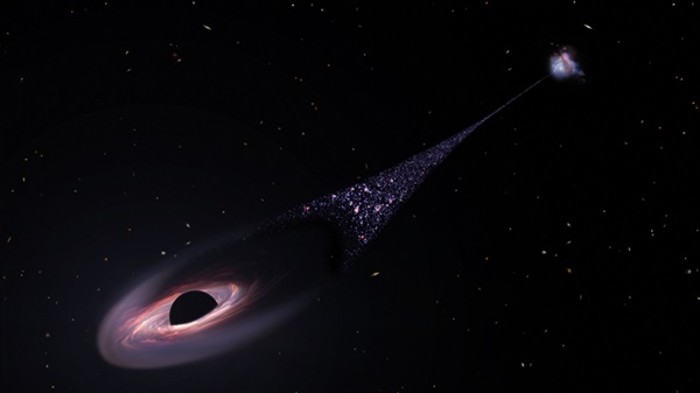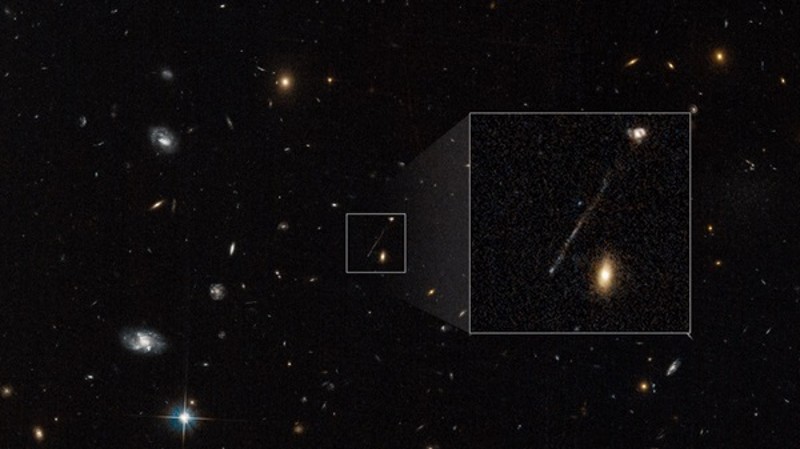See A Black Hole That Is Running Through Space Creating New Stars
A black hole moving through space was photographed by NASA.
Astronomers have spotted what they believe to be a supermassive black hole making a hot streak of stars as it launches away from the core of a far-off galaxy. As reported by Astronomy, the stunning discovery, if confirmed, would be the first such anomaly of its kind ever seen by humans. It would also be evidence that parent galaxies can eject black holes, providing more insight into the movement of these regions of spacetime across the universe.

The black hole discovery was made by Yale University’s Pieter van Dokkum with the Hubble Space Telescope, demonstrating that the decades-old scientific instrument is still providing new insights into the universe, despite the creation of the higher-resolution James Webb Space Telescope. But how does a telescope even catch an image of something that emits no light? How do we even know a black hole is there?
Black holes are visible in space due to their accretion disks—superhot swirls of gas and dust that emit a great deal of light and spiral around the spatial voids. In this case, the black hole was also revealed by a light trail initially thought to be an imaging artifact. However, the streak was still visible when van Dokkum and his team accounted for cosmic rays that could have created an artifact.
The streak appears instead to be a string of hot, blue stars trailing in the wake of the black hole, meaning the space vacuum is spinning off new stars as it travels at supersonic speeds away from its parent galaxy. The streak could also have been an astrophysical jet—an outflow of ionized matter that is not an uncommon sight, but the light intensity increases as the black hole gets farther from the core of the galaxy and lacks the typical fanning out seen in these jets. This leads researchers to conclude that they are seeing a line of new stars.

How this newly observed black hole phenomenon works is not yet fully known, but it appears that the high speed of the void shocks the gas in front of it, leading to the creation of stars. The process appears to have started some 50 million years ago as the supermassive black holes of two galaxies began to orbit one another. It seems that later, when a third galaxy joined in, the resulting interplay led to one of the galaxies’ black holes—which is 20 million times the mass of our sun—shooting off in one direction while the other two galaxies went the opposite way.
All of these black hole observations will need to be researched further, but the findings, published in The Astrophysical Journal Letters on April 6, are exciting. The discovery will be further explored by the team with follow-up observations through the James Webb Space Telescope and the Chandra X-Ray Observatory, NASA’s flagship X-ray telescope. If the research they have done so far is confirmed in these investigations, it will give astronomers a fascinating new look into the interactions between galaxies and their black holes, as well as the formation of stars across the universe.











